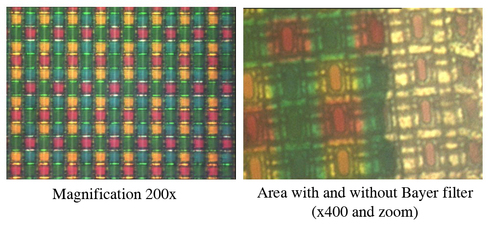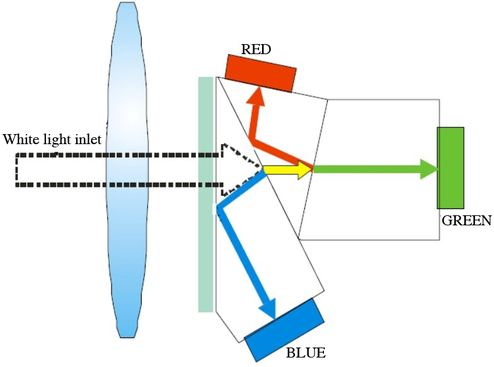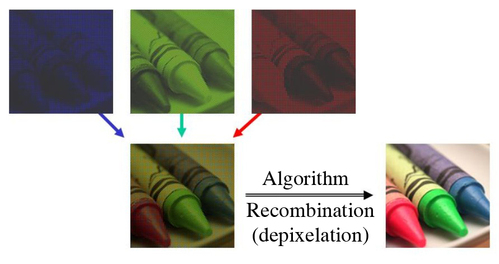
Color
Capturing color images is sometimes necessary. Two techniques are mainly used to digitize color: either the resolution of only one sensor is decimated by a color filter network (Bayer filter, 3 colors, Fig. 35, or more, Fig. 36), or the light is dispersed into several components by a system of prisms in which each one produces the image of the object's color component on a detector dedicated to this color (Fig. 37).

The final image is then reconstructed using algorithms that recombine the components and treat color sensitivity, gain and spectral decomposition of the light signal. These algorithms guarantee the «depixelation» of figure 38.



The last possibility consists in piling the light sensitive diodes and filtering by selecting the wavelength on the sensor depth (Fig. 39).
